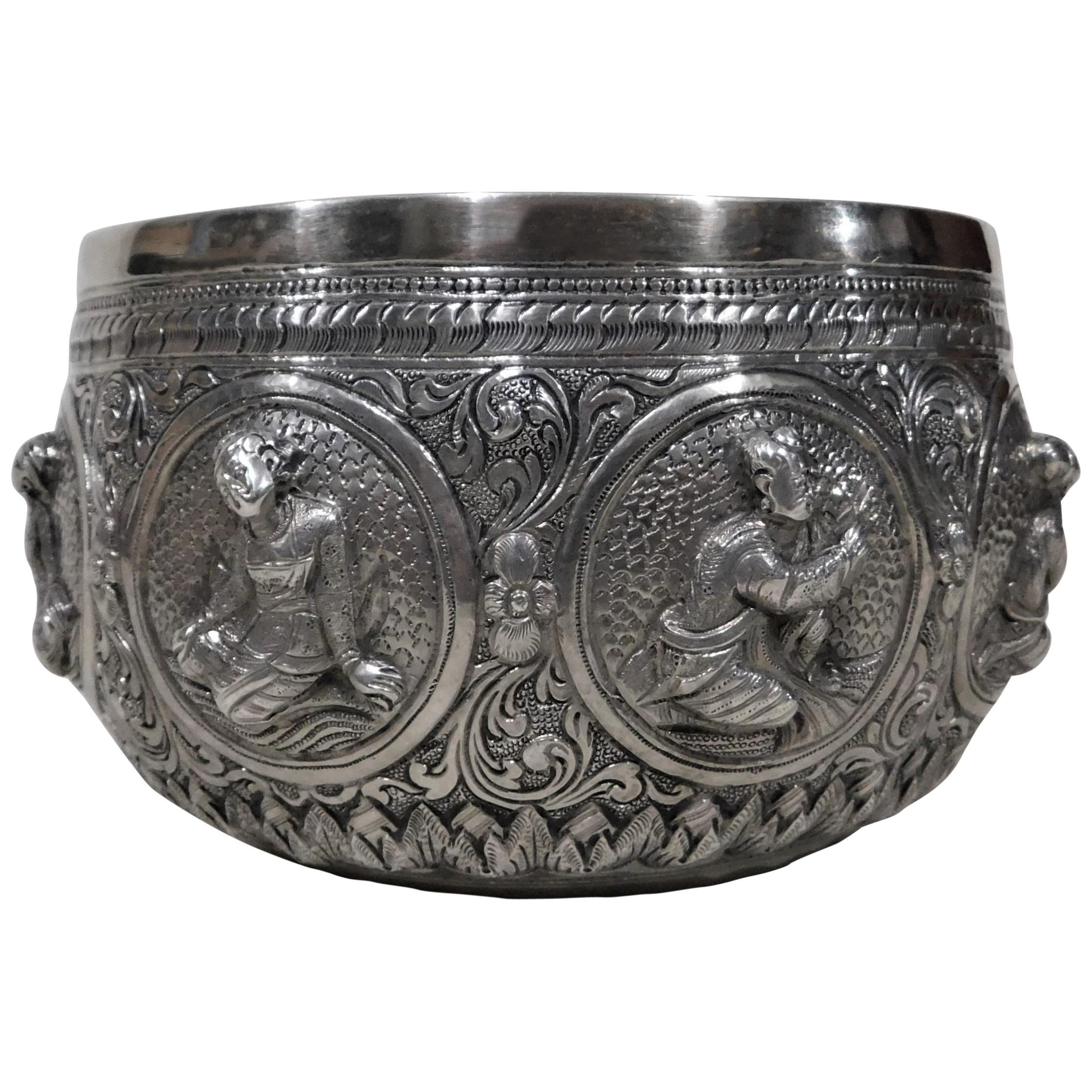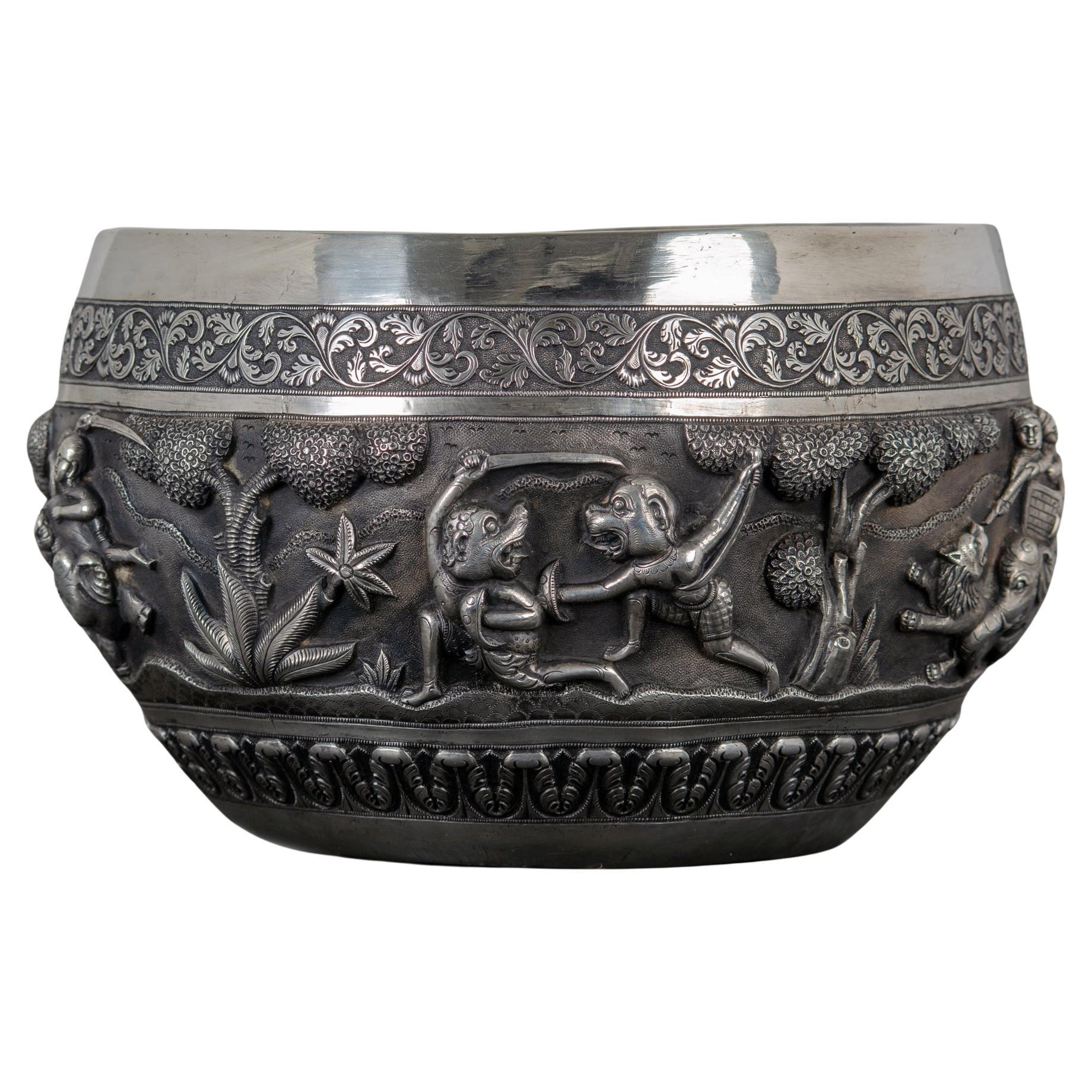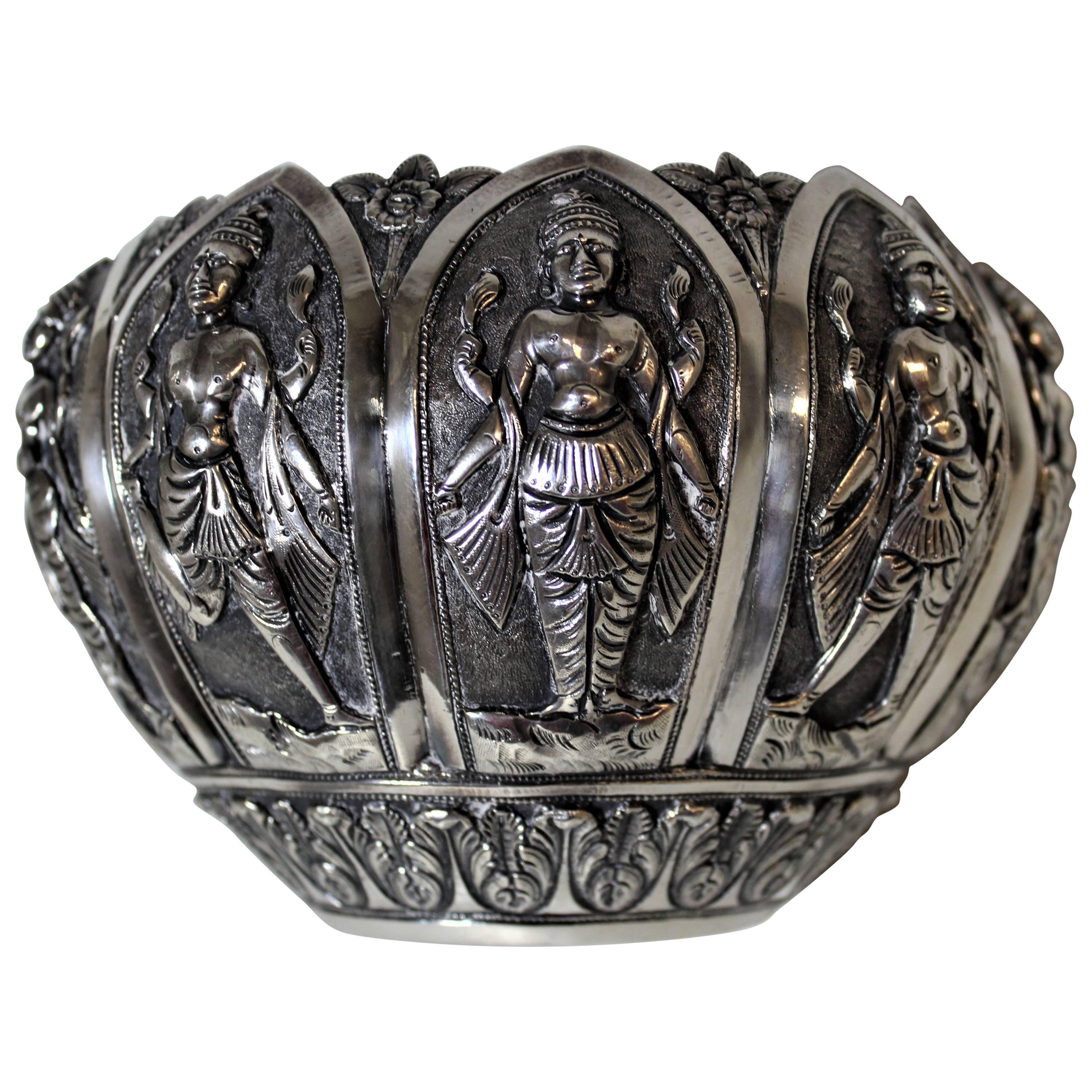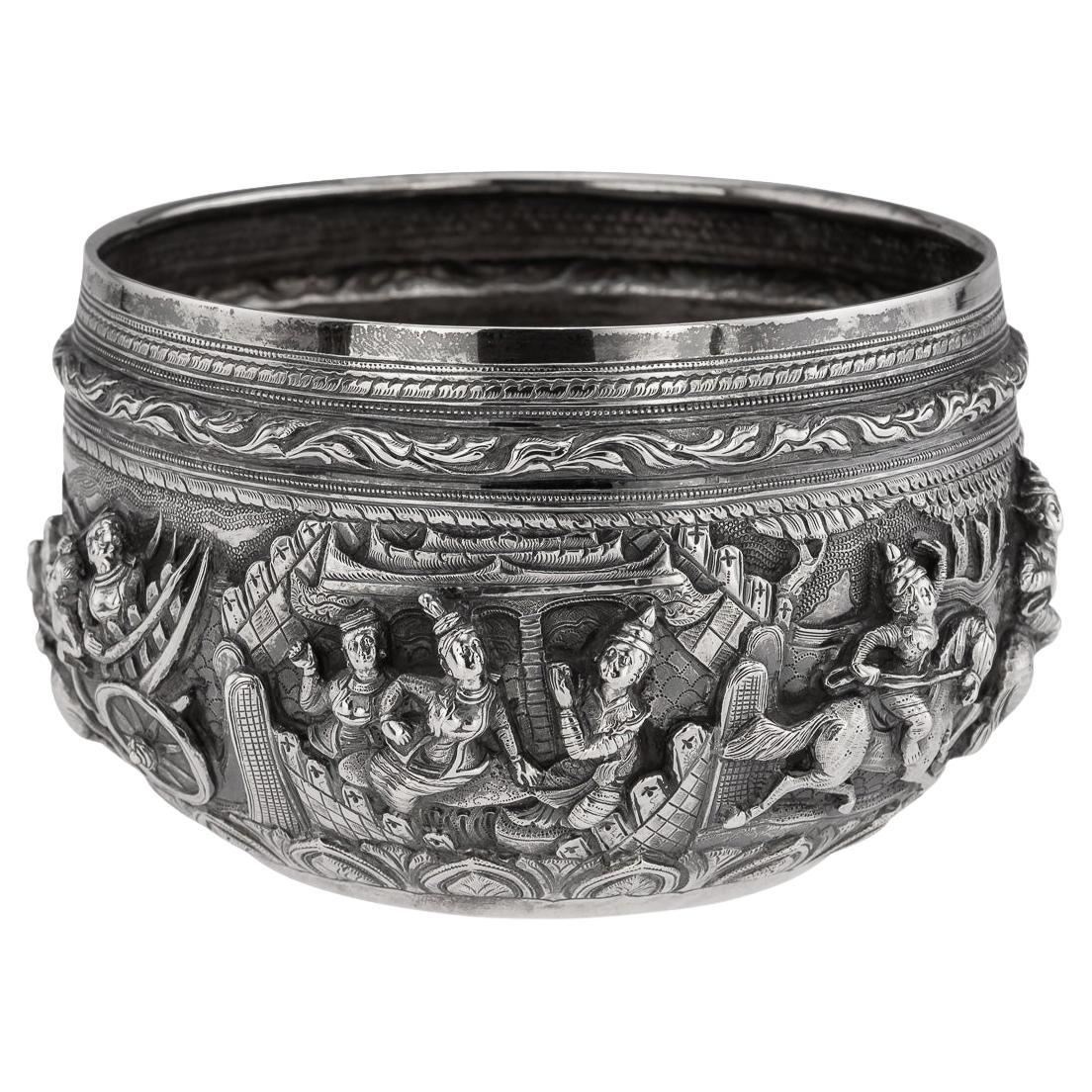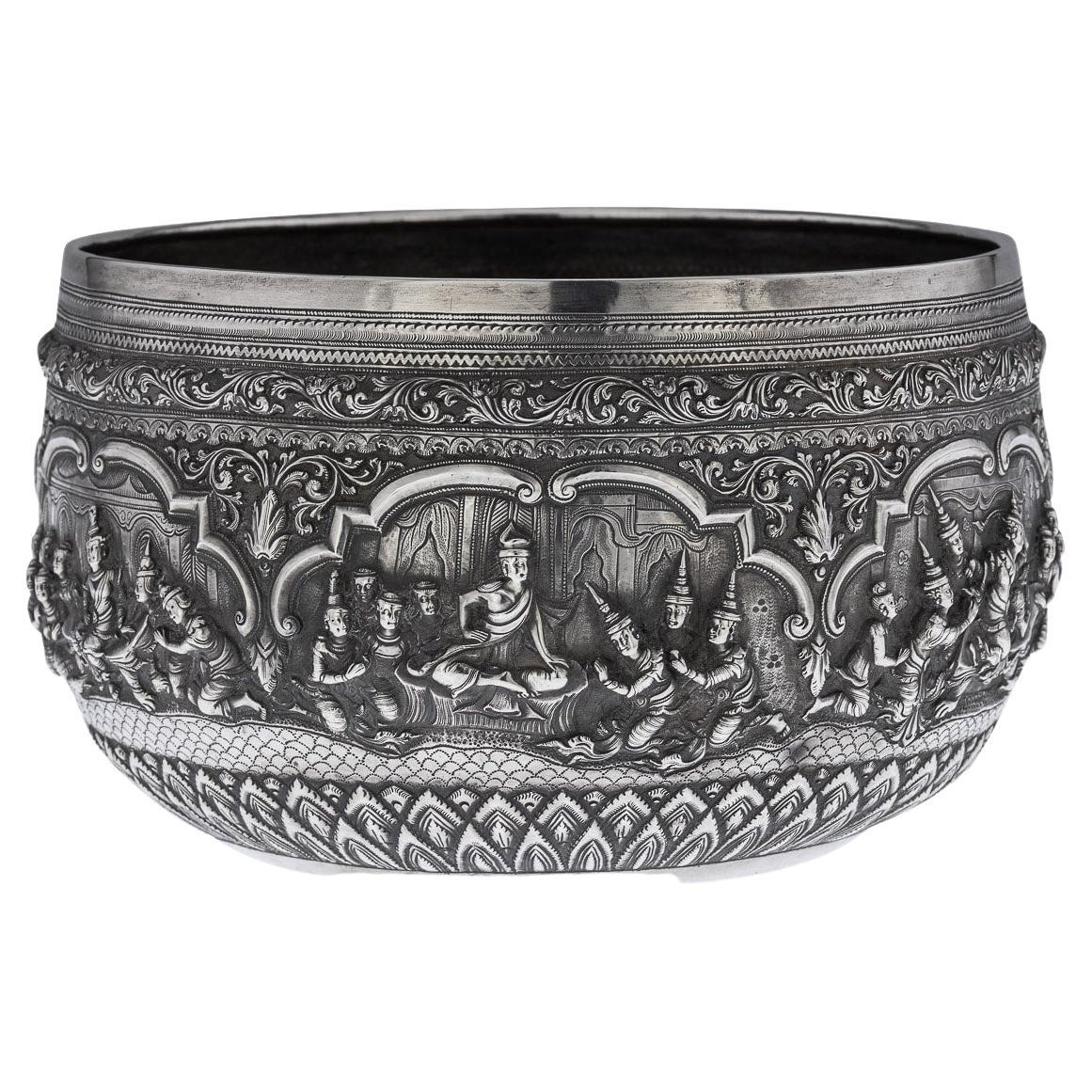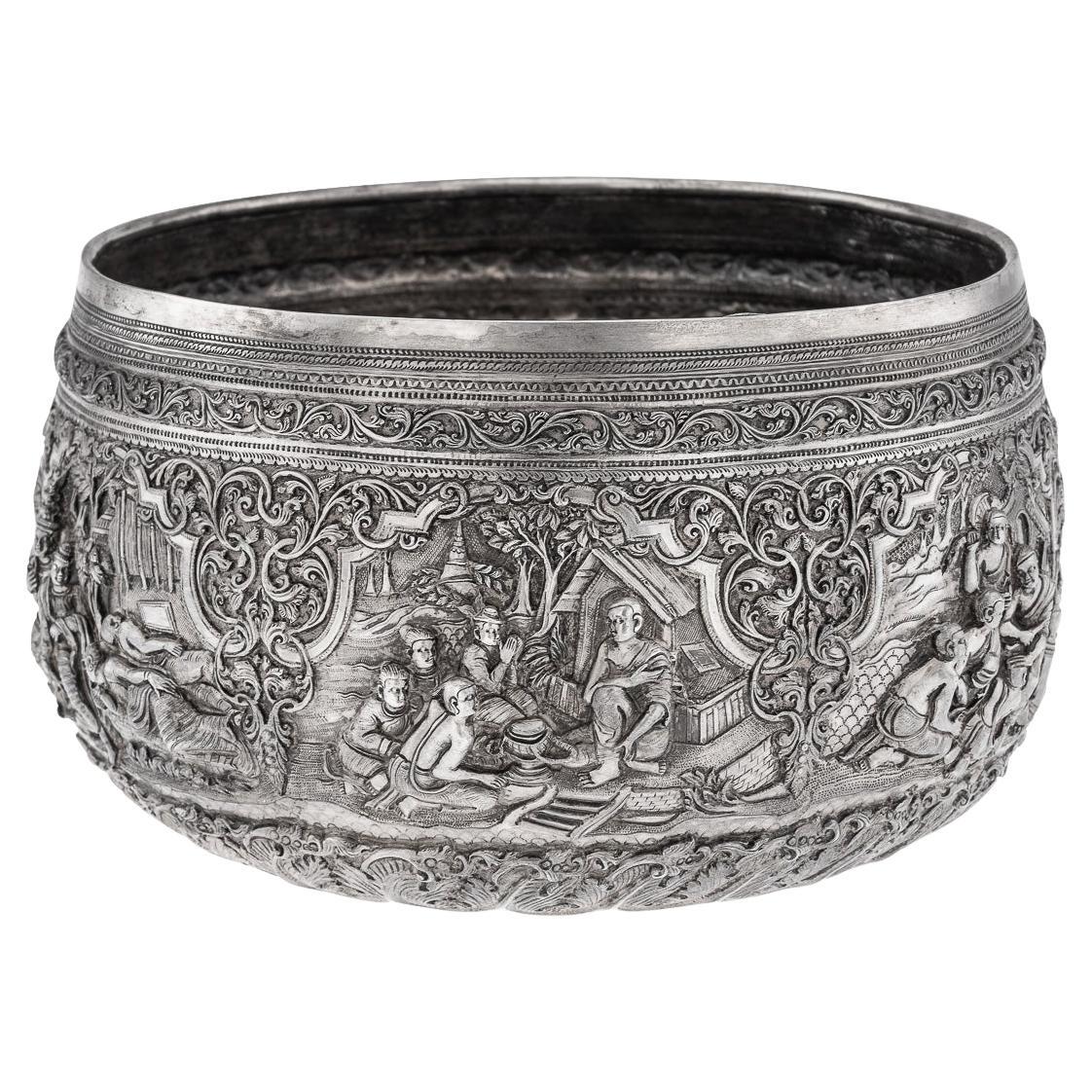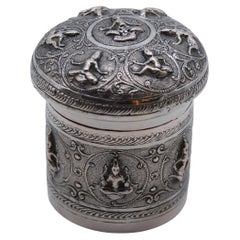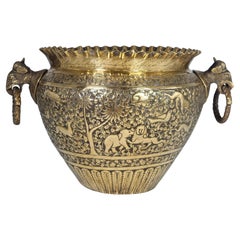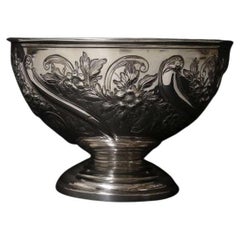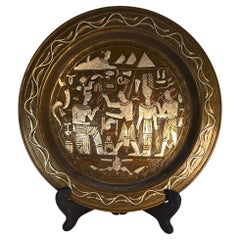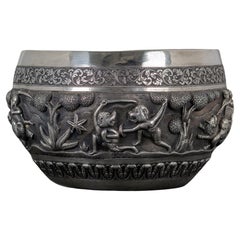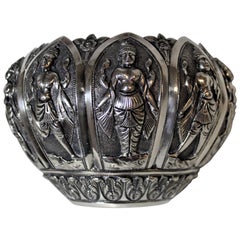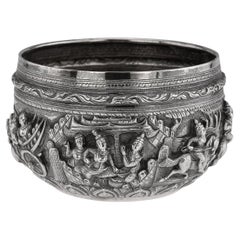Items Similar to 19th century Indian silver Raj period deep relief repousse work bowl circa 1870
Want more images or videos?
Request additional images or videos from the seller
1 of 21
19th century Indian silver Raj period deep relief repousse work bowl circa 1870
$2,918.90
£2,145
€2,520.02
CA$4,010.08
A$4,476.88
CHF 2,345.82
MX$54,801.35
NOK 29,791.88
SEK 28,089.96
DKK 18,807.16
Shipping
Retrieving quote...The 1stDibs Promise:
Authenticity Guarantee,
Money-Back Guarantee,
24-Hour Cancellation
About the Item
This very high quality piece of impressive Raj period Indian silver is superbly decorated with three dimensional deep relief repousse work in the form of traditional male and female figures carrying out various tasks and religious customs.
The detail and depth of the decoration are very fine and rarely available. This type of decoration is completely hand worked using chisels and punches working from both the inside and outer surfaces to produce this amazing work of art which is finished with deep carved engraving throughout the figurative centre with a boarder of acanthus leaves above and below. The underside of this impressive bowl is decorated with an engraved peacock.
The silver from which the bowl is made tests as high grade.
Indian, circa 1870
Height 12cm x width 18.5cm x depth 18.5cm
We hope you have enjoyed looking at this fine piece of Indian art. Please let us know if you need any further information or photographs. We are more than happy to help.
- Dimensions:Height: 4.73 in (12 cm)Width: 7.29 in (18.5 cm)Depth: 7.29 in (18.5 cm)
- Style:Other (Of the Period)
- Materials and Techniques:Silver,Repoussé
- Place of Origin:
- Period:
- Date of Manufacture:1870
- Condition:Wear consistent with age and use.
- Seller Location:Central England, GB
- Reference Number:1stDibs: LU6434238706342
About the Seller
5.0
Vetted Professional Seller
Every seller passes strict standards for authenticity and reliability
Established in 1984
1stDibs seller since 2022
24 sales on 1stDibs
Typical response time: 1 hour
- ShippingRetrieving quote...Shipping from: Central England, United Kingdom
- Return Policy
Authenticity Guarantee
In the unlikely event there’s an issue with an item’s authenticity, contact us within 1 year for a full refund. DetailsMoney-Back Guarantee
If your item is not as described, is damaged in transit, or does not arrive, contact us within 7 days for a full refund. Details24-Hour Cancellation
You have a 24-hour grace period in which to reconsider your purchase, with no questions asked.Vetted Professional Sellers
Our world-class sellers must adhere to strict standards for service and quality, maintaining the integrity of our listings.Price-Match Guarantee
If you find that a seller listed the same item for a lower price elsewhere, we’ll match it.Trusted Global Delivery
Our best-in-class carrier network provides specialized shipping options worldwide, including custom delivery.More From This Seller
View AllIndian Raj period silver repousse decorated lidded container, circa 1900
Located in Central England, GB
A fine Indian silver lidded container is unmarked but tested. It is finely decorated with raised and chased dancing figures which are finely detailed with hand engraving and separate...
Category
Early 20th Century Indian Anglo Raj Metalwork
Materials
Silver
A large hand decorated Indian Raj period brass Jardinière circa 1880
Located in Central England, GB
This large and impressive polished brass jardiere or twin handled urn is highly decorative. It is hand worked in reclaimed sheet brass which originally came from some large German br...
Category
Antique Late 19th Century Indian Anglo Raj Metalwork
Materials
Brass
19th Century Elegant Silver Bowl Made by Edward Barnard and Sons London 1897-8
Located in Central England, GB
A fine late 19th C silver bowl.
This fine late Victorian silver bowl is a superbly crafted piece of silversmithing with its elegant and simple design. It has a broad bowl raised onto a narrow stem with a moulded and stepped foot. It is externally decorated with beautifully chased, raised and engraved garlands of flowers and foliage amongst shaped swags there is a panel front and back which could be inscribed if required. This heavy silver bowl retains traces of gilding to the interior showing its quality. This piece is hallmarked London 1897 -98 with the quality makers mark of Edward Barnard...
Category
Antique 19th Century Victorian Decorative Bowls
Materials
Silver
Egyptian Grand Tour Cairo ware silver inlaid charger circa 1900
Located in Central England, GB
This superb heavy Egyptian Grand Tour wall charger is beautifully handmade in heavy brass or bronze. This fine piece weighs over half a kilogram.
...
Category
Early 20th Century Egyptian Grand Tour Metalwork
Materials
Silver, Bronze
Tibetan Bronze Incense Burner Finely Detailed with Mythical Beasts circa 1910
Located in Central England, GB
A Tibetan Bronze Incense Burner
This highly decorative piece is made from cast bronze which has a dark patina and Verdigris finish. It is cast with fine detail with figures and my...
Category
Vintage 1910s Tibetan Tibetan More Asian Art, Objects and Furniture
Materials
Bronze
A Mindanao silver inlaid bronze betal nut box, Islamic, mid to late 19th century
Located in Central England, GB
This highly decorative box is a betal nut box. The habit of chewing was relevant in the southern Philippines and much of southeast Asia. Wealthy Maraneo families on the island of Mi...
Category
Antique Late 19th Century Philippine Tribal Decorative Boxes
Materials
Silver
You May Also Like
Silver Anglo-Indian Bowl with Eight Figures
Located in Hamilton, Ontario
Handmade silver Anglo-Indian bowl with eight figures each featuring a different pose. Ornate engraved peacock on the bottom of bowl.
Category
Antique Late 19th Century Indian Anglo-Indian Decorative Bowls
Materials
Silver
Indian Silver Repoussé Hunting Bowl, Lucknow, 19th Century
Located in Savannah, GA
A large repoussé silver ceremonial hunting bowl, Lucknow, North India, Raj Period, late 19th century.
Five scenes depicting mythological creatures, lion...
Category
Antique 19th Century Indian Anglo Raj Decorative Bowls
Materials
Silver
Silver Anglo-Indian Bowl with Figures
Located in Hamilton, Ontario
Silver Anglo-Indian bowl with ten figures each featuring a different pose.
Category
Antique Late 19th Century Indian Anglo-Indian Decorative Bowls
Materials
Silver
$1,995 Sale Price
37% Off
Antique 20th Century Burmese Repoussé Solid Silver "Mahajanaka Jataka" Bowl
Located in Royal Tunbridge Wells, Kent
Antique 20th Century Burmese (Myanmar) solid silver bowl in circular form, finely chased with detailed scenes from the Mahajanaka Jataka. In the Mahajanaka Jataka, the bodhisattva wh...
Category
20th Century Burmese Other Serving Bowls
Materials
Silver
19th Century Exceptional Burmese Solid Silver Thabeik Bowl, Rangoon, c.1880
Located in Royal Tunbridge Wells, Kent
Antique 19th Century Exceptional Burmese, Myanmar solid silver thabeik bowl, repousse' decorated in high relief depicting different traditional scenes from the Burmese mythology, sho...
Category
Antique 19th Century Burmese Decorative Bowls
Materials
Silver
Antique 19th Century Burmese (Myanmar) Solid Silver Thabeik Bowl, Rangoon c.1880
Located in Royal Tunbridge Wells, Kent
Antique 19th Century Exceptional Burmese, (Myanmar) solid silver thabeik bowl, repousse' decorated in high relief depicting different traditional scenes from the Burmese mythology, s...
Category
Antique 19th Century Burmese Other Serving Bowls
Materials
Silver
